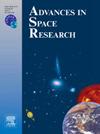Investigation of land subsidence in Guangdong Province, China, using PS-InSAR technique
IF 2.8
3区 地球科学
Q2 ASTRONOMY & ASTROPHYSICS
引用次数: 0
Abstract
Ground subsidence is a natural disaster that can cause severe consequences such as surface deformation and building collapse. With rapid economic growth, activities such as groundwater extraction, subway construction, and large-scale infrastructure projects have weakened the soil’s load-bearing capacity, resulting in subsidence issues for buildings and the ground. As the mechanism of land subsidence caused by the above factors is still unclear, it is necessary to conduct further study in a specific area. Intending to provide a scientific basis for successfully preventing and mitigating the potential risks associated with subsidence, we employed the Persistent Scatterer InSAR (PS-InSAR) technique for monitoring to precisely explore the causes, processes, and impacts of the subsidence. In this study, 14 Sentinel-1A terrain observations by progressive scans (TOPS) Synthetic Aperture Radar (SAR) images from January to December 2020 have been selected to investigate the spatiotemporal ground deformation in the specific Guangzhou and Foshan regions. Various analytical methods have been employed to investigate the significant deformation mechanism. Firstly, we analyzed characteristic points in industrial parks and urban areas. Subsequently, detailed investigations were conducted in three severely subsiding areas: Huadu, Nanhai, and Haizhu districts. Results demonstrate that the region’s surface deformation is highly heterogeneous; subsidence is primarily concentrated in urban areas and usually spreads outward from city centers. Additionally, numerous uplift regions were identified, with the maximum uplift rate exceeding 29 mm/yr. In particular, the highest rates of subsidence were found in Guangzhou’s Haizhu District, with annual average rates ranging from −28.3 mm/yr to −29.4 mm/yr, and significant seasonal fluctuations of nonlinear subsidence patterns have also been detected. Furthermore, comparative analysis of factors such as urban development (e.g., subway systems and artificial structures), rainfall, and industrial expansion in major subsidence areas indicates that subsidence in this region is primarily influenced by anthropogenic factors (such as industrial development and surface loading) as well as natural factors like rainfall and karst processes.
求助全文
约1分钟内获得全文
求助全文
来源期刊

Advances in Space Research
地学天文-地球科学综合
CiteScore
5.20
自引率
11.50%
发文量
800
审稿时长
5.8 months
期刊介绍:
The COSPAR publication Advances in Space Research (ASR) is an open journal covering all areas of space research including: space studies of the Earth''s surface, meteorology, climate, the Earth-Moon system, planets and small bodies of the solar system, upper atmospheres, ionospheres and magnetospheres of the Earth and planets including reference atmospheres, space plasmas in the solar system, astrophysics from space, materials sciences in space, fundamental physics in space, space debris, space weather, Earth observations of space phenomena, etc.
NB: Please note that manuscripts related to life sciences as related to space are no more accepted for submission to Advances in Space Research. Such manuscripts should now be submitted to the new COSPAR Journal Life Sciences in Space Research (LSSR).
All submissions are reviewed by two scientists in the field. COSPAR is an interdisciplinary scientific organization concerned with the progress of space research on an international scale. Operating under the rules of ICSU, COSPAR ignores political considerations and considers all questions solely from the scientific viewpoint.
 求助内容:
求助内容: 应助结果提醒方式:
应助结果提醒方式:


